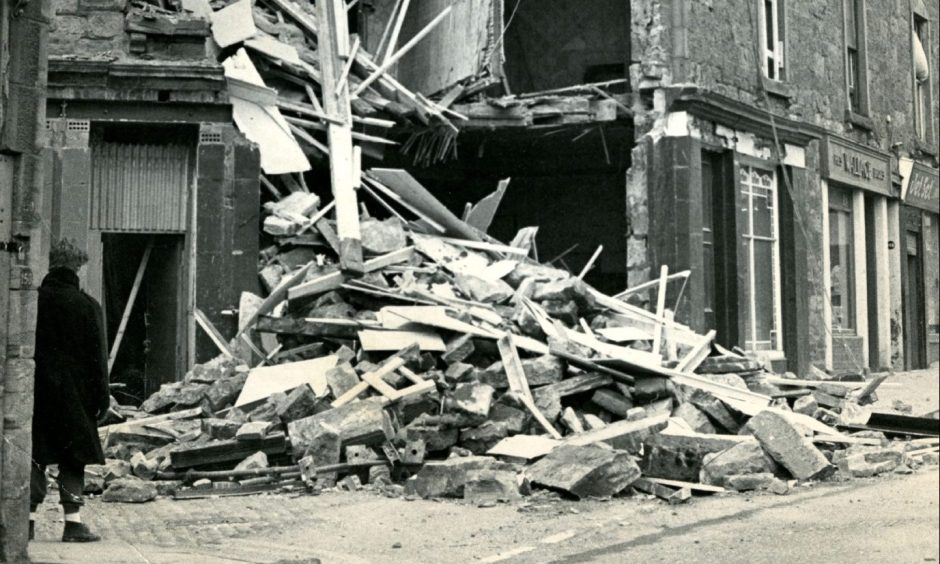
It sounded like a bomb had gone off when a tenement building crashed to the ground in Dundee in March 1984.
The tenement block on the corner of Annfield Road and Blackness Road survived two world wars but was no match for the rough hands of time.
A foreman in charge of a squad of workmen renovating the building noticed the gable wall had subsided about four inches since the previous day.
Workmen were fitting a steel beam on the first floor to strengthen the building.
They noticed the tell-tale signs of cracks opening and the façade beginning to move.
The foreman didn’t hang about.
He got his men out of the hundred-year-old tenement.
The police were informed of the danger and sealed off Blackness Road between Forest
Park Road and Blackness Street.
The gable end crumpled just five minutes after the workers cleared the building.
The four-storey block came crashing down with an almighty clatter.
A section about 40 feet across broke cleanly away from the tenement, throwing rubble over the roadway and filling the air with a cloud of dust.
A miracle nobody was seriously injured
It was mayhem.
The Courier said shocked shopkeepers rushed from their premises fearing a bomb blast to find passers-by enveloped in the fine masonry dust.
When the dust settled, it was seen that all four floors of the tenement had given way, leaving a large pile of stones, wooden beams and debris strewn about the street.
It was remarkable that no one was killed in the incident.
A Courier reporter spoke to witnesses.
Sandra Button, owner of Jet Set Hairdressers, fewer than 20 yards from the gable end, said she thought a bomb had exploded so loud was the noise.
“I was really shaken and rushed out of the shop to see what had happened,” she said.
“There was dust everywhere.
“I was relieved when I found out the building had collapsed.”
When I heard the noise, I thought I was in danger in the shop and decided the street was a safer place to be.”
This was at the height of the IRA bombing campaign on mainland Britain.
Staff at Wallace’s bakery shop right next to the gable end also ran out to the street, fearing the whole building was going to fall down.
“When I heard the noise, I thought I was in danger in the shop and decided the street was a safer place to be,” said one woman.
Dundee tenement wall collapsed cleanly on both sides
All bus services normally using Blackness Road were immediately diverted along the university by-pass until the extent of the damage could be assessed.
The building was owned by letting agent I.B. Murray.
James Hutcheon, chief engineer with Dundee District Council, was called to survey the damage after the tenement collapse.
He was hopeful the gable end, although badly damaged, could be restored.
“Fortunately, the wall has collapsed cleanly on both sides, so we may be able to save the building yet,” he said.
Arrangements were made with contractors to clear the rubble.
After surveying the building, the district council’s master of works made arrangements to have it made safe but the road remained closed for a period of time.
One Blackness Road resident wrote to the Evening Telegraph letters page.
He said the tenement collapse brought back memories of an unprecedented night of terror that happened just a few hundred yards away in Rosefield Street.
The letter writer suggested it was very similar to the scene when a four-storey tenement was destroyed by a German raider on Bonfire Night in 1940.
It was.
Nazi attack on Dundee was recalled…
Rosefield Street was one in a series of German attacks on Dundee including a bombing at the Taybank Works air-raid shelter.
The bomb dropped through the roof of the tenement during the night and devastated the flats in what seemed like a random attack.
It only exploded when it reached the bottom floor.
Mary Ann Laing was killed by an iron range falling through from the floor above.
Robert Coventry was killed instantly while reading the paper.
He was found trapped under the cooker and when they lifted it off him he was sitting in a chair with a copy of The Courier on his lap.
The fact Dundee didn’t suffer further damage was a surprise, given its prime position on the Tay would have made it a prime target for enemy bombers.
After the Rosefield Street bombing, around 24 families were left homeless.
Amazingly, despite the carnage, one young lad went back to find his goldfish and found it swimming about in its bowl, which was totally intact, before taking it away.
The Rosefield Street tenements were rebuilt when the guns fell silent.
The Evening Telegraph in March 1984 shared side-by-side photos of both tenement blocks and their similarities were quite uncanny.
Readers also agreed once the letters page was published.
The building survived the bulldozer and the gable end wall of the Blackness Road tenement on the corner of Annfield Road was eventually rebuilt.
Anyone passing by today would never know it was once the scene of a building collapse that made front-page headlines 40 years ago.
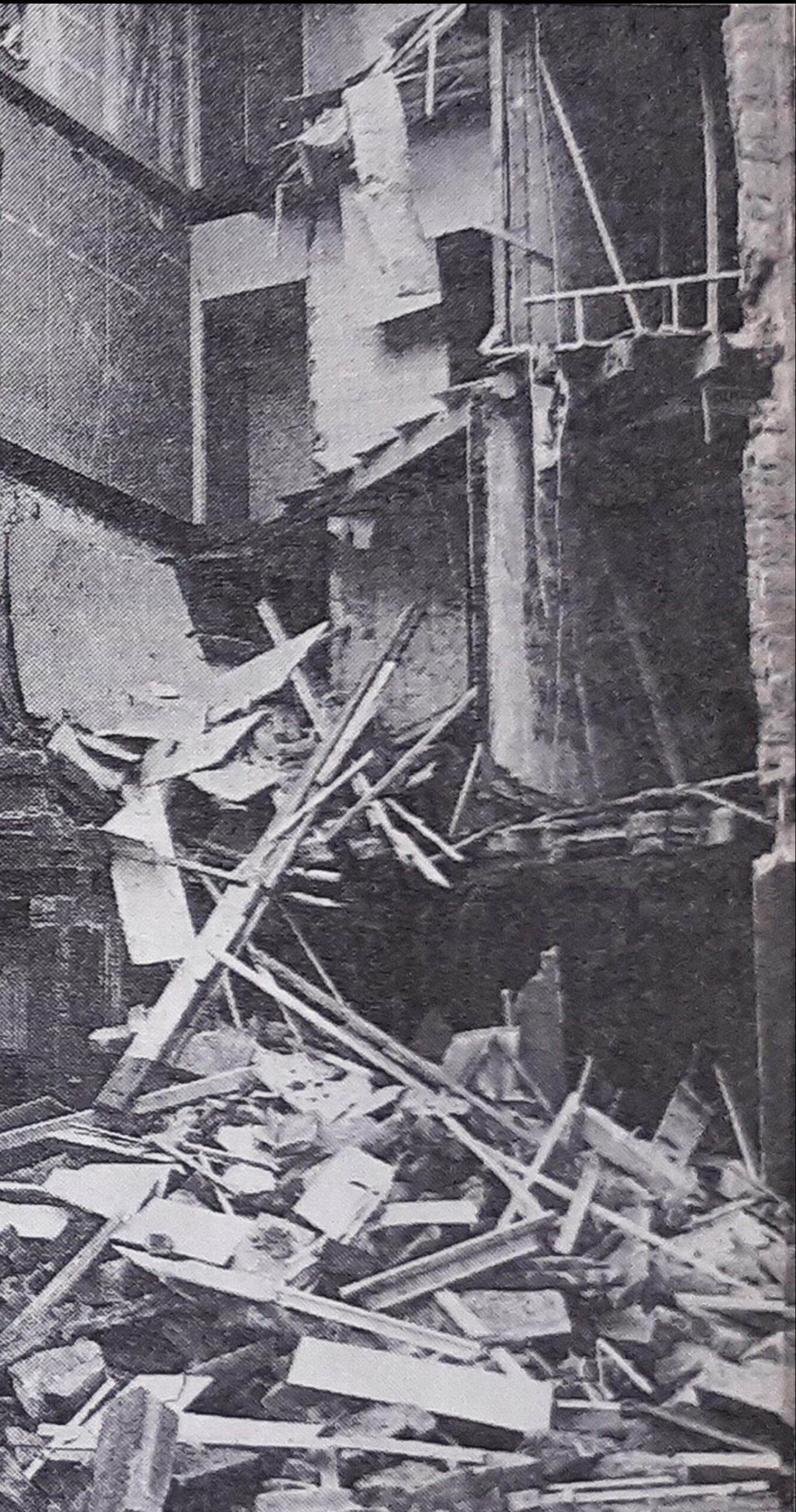
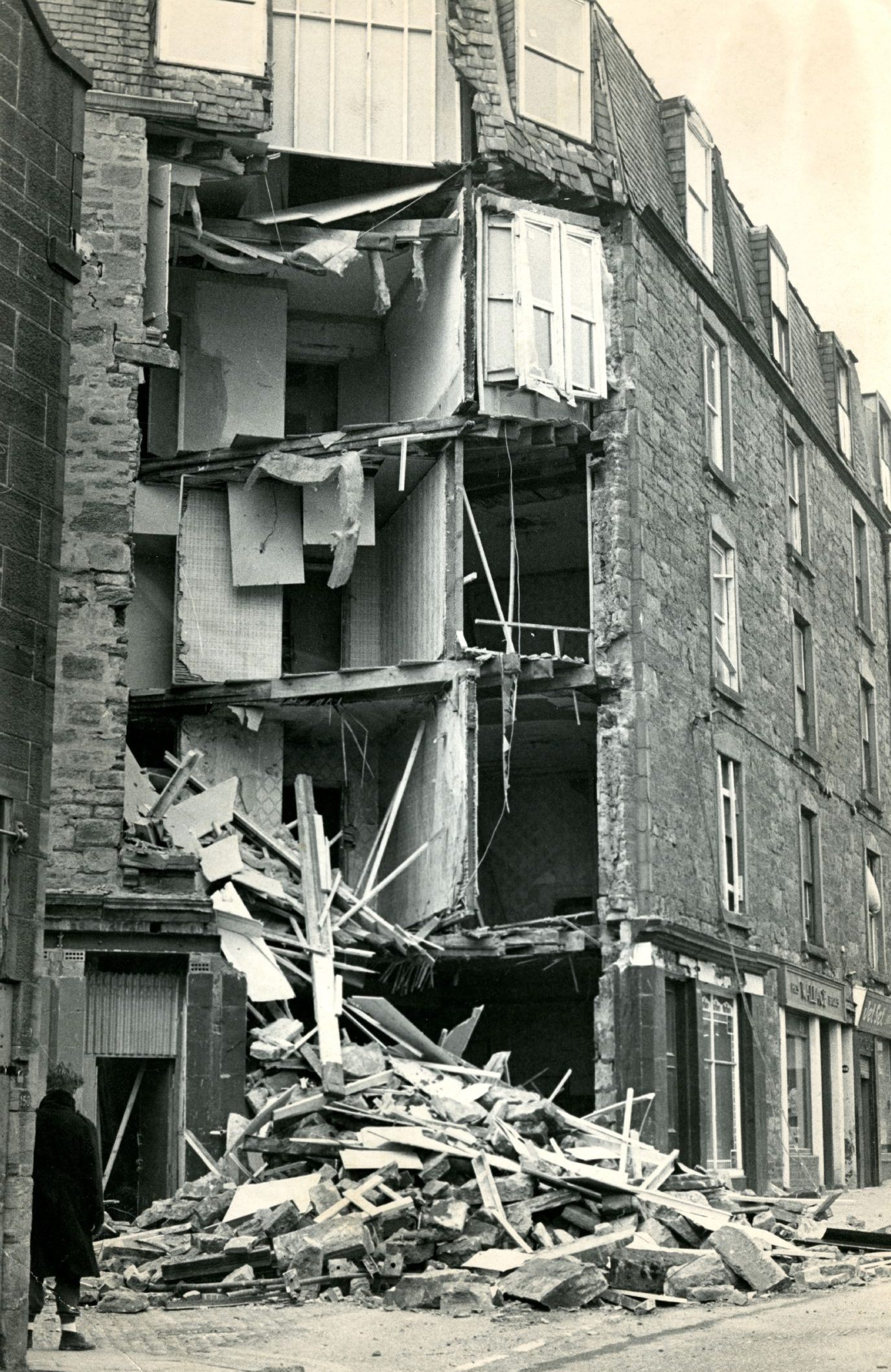
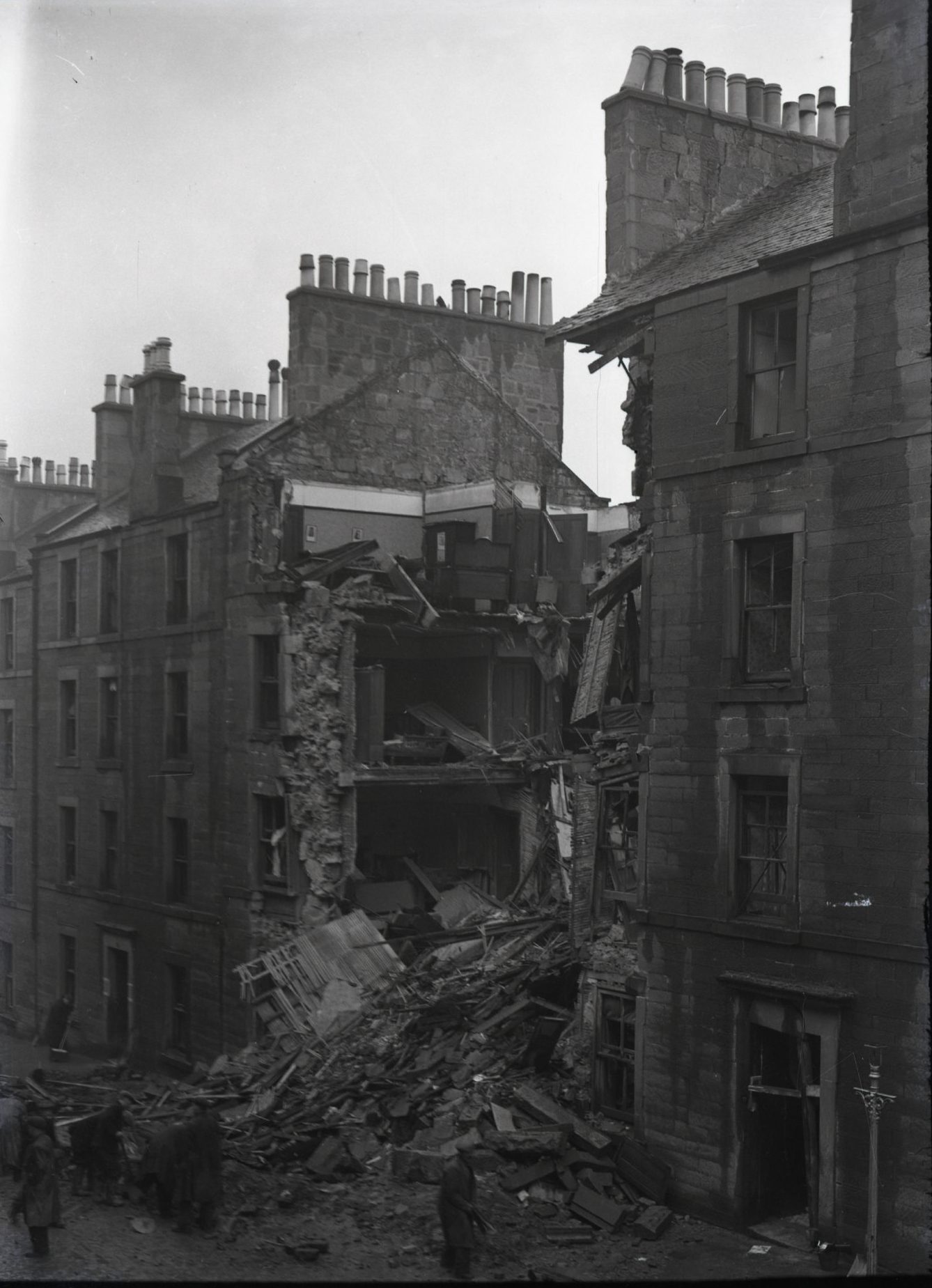
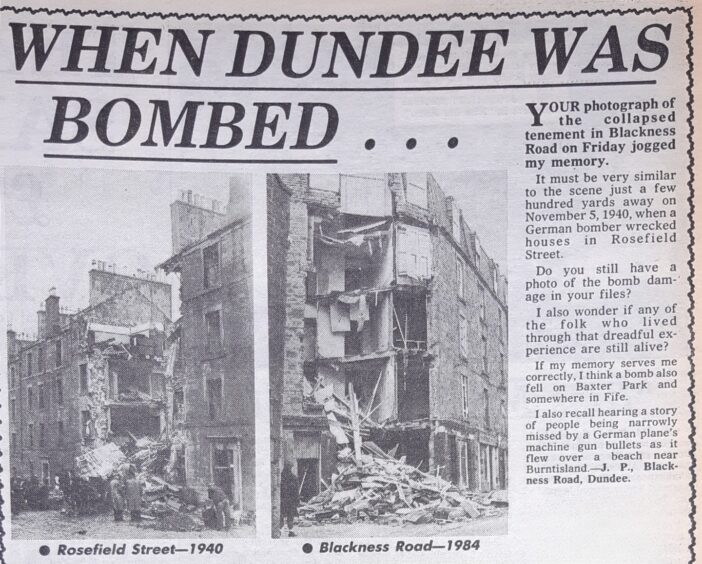










Conversation